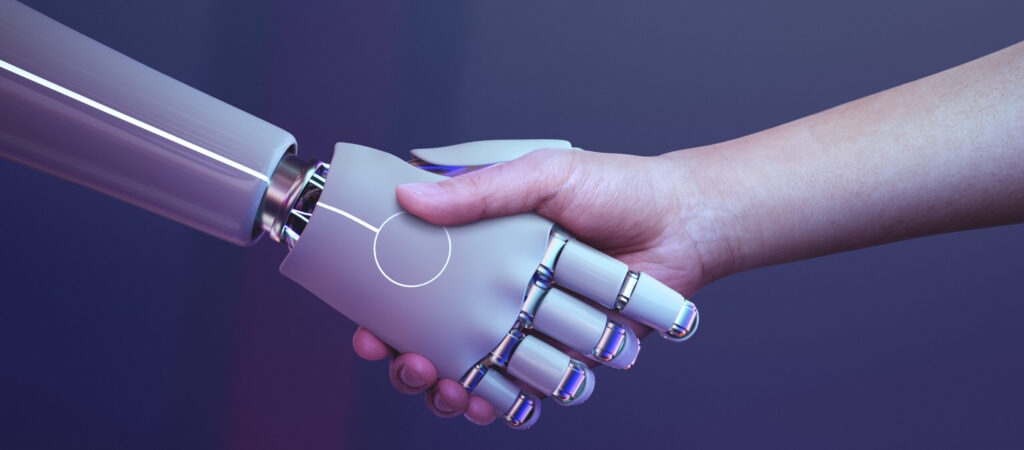INTRODUCTION
It can be useful to think of yourself as being under attack on your so-called digital territory all the
time. The opponent does not rest and regularly employs various kinds of attacks, from the complex
phishing to the brute force attacks which makes it really hard to defend oneself or some valuable
possession. This is the daily experience of cybersecurity specialists who are always aware of new
emerging cyber threats. But there’s good news: They assist in the delivery of the message of the
song which is no longer lonely. Thus, AI is emerging as a friend, not an enemy, as it is transforming
the landscape of cyber defence.
AI: FROM ALERT WATCHDOG TO PREDICTIVE GUARDIAN
Consider AI as an extra-terrestrial security guard with extra-terrestrial level of strength and
concentration. It can process far more data than any analyst – network traffic (including encrypted
traffic analysis), user and system activity logs, even email communication schemes. Through this
approach, AI is not only able to detect anomalous behaviour but also analyse previous attacks,
including zero-day attacks, to make future predictions.
Multi-Layered Threat Detection: It can look at the data in different layers of a network security
system and determine there are relationships that suggest a multi-stage attack plan. It also assists in
identifying other vulnerabilities that a conventional signature-based detection system can often
overlook.
Advanced Threat Hunting: AI can sort through an enormous amount of data to look for signs of
potential threats that may be concealed in a system. It can detect novelties in the usage of users,
network traffic, or perhaps in the use of system resources as a sign of an attack.
Deception Techniques: AI can be utilised in developing decoy systems or virtual honeynets in
order to ensnare attackers and gather information on their techniques and instruments. This
information can then be used to increase the overall cyberspace protection.
THE LATEST ON THE AI FRONT
Beyond Malware Blocking: However, Check Point recently implemented an AI system which is
relatively impressive but remains just one option. Scientists are working on creating AI that matters
not only in stopping malware but also in identifying other types of attacks like ransomware attacks
and social engineering attacks.
The Rise of Adversarial AI: Now, hackers are also devising their AI tools to slip through the
defences put in place by the former. This includes malice oriented strategies such as adversarial
machine learning in which the attacker distorts data to obfuscate AI.
THE FUTURE: A POWERFUL PARTNERSHIP AI makes things easier yet it is not the be all and end all. The attackers’ tactics will also adapt as our AI defences become more robust and the AI arms race continues. This provides an endless cycle, where one side tries to outcompete the other one at their own game. The key to winning? Collaboration.
Continuous Improvement: Thus, it is imperative that AI security system development be a
continuous loop. Security researchers will be required to monitor the behaviour of an attacker and
refresh their models constantly.
Explainable AI for Security Teams: Since AI is increasingly implicated in security decisions, how
this is done (explainable AI) is integral. This will help in the decision making process of security
professionals and not mere reliance on the AI technologies.
Human Expertise in the Loop: AI performs well in the process of automation and decision-
making based on data handling, while the human factor is still crucial for risk assessment, decision-
making, and crisis management and forecasting. Security professionals will use AI for speed and
strength they possess, and they will step back and decide for other situations.
CONCLUSION
The guessing games that are still going on between cybersecurity organisations do have future
impacts. Therefore, we need to keep awareness of improvements, have a good partnership between
human and AI, and enhance our barriers consecutively to create more advancement in our digital
security. In unison, people will be able to come up with ways and means on addressing the issue of
cybercrime and hence we shall be able to enjoy a favourable security.
IMAGE CREDIT
Claude AI Info – https://claudeai.wiki/
About the Author

Krishna Raj M
Krishnaraj is a cybersecurity enthusiast who began exploring hacking at the age of 16 and gained hands-on experience in penetration testing. He actively participates in capture the flag events, where he sharpens his skills with real-world challenges. His primary interest lies in red teaming, focusing on simulating sophisticated attacks to strengthen defenses and contribute to advancements in cybersecurity.

